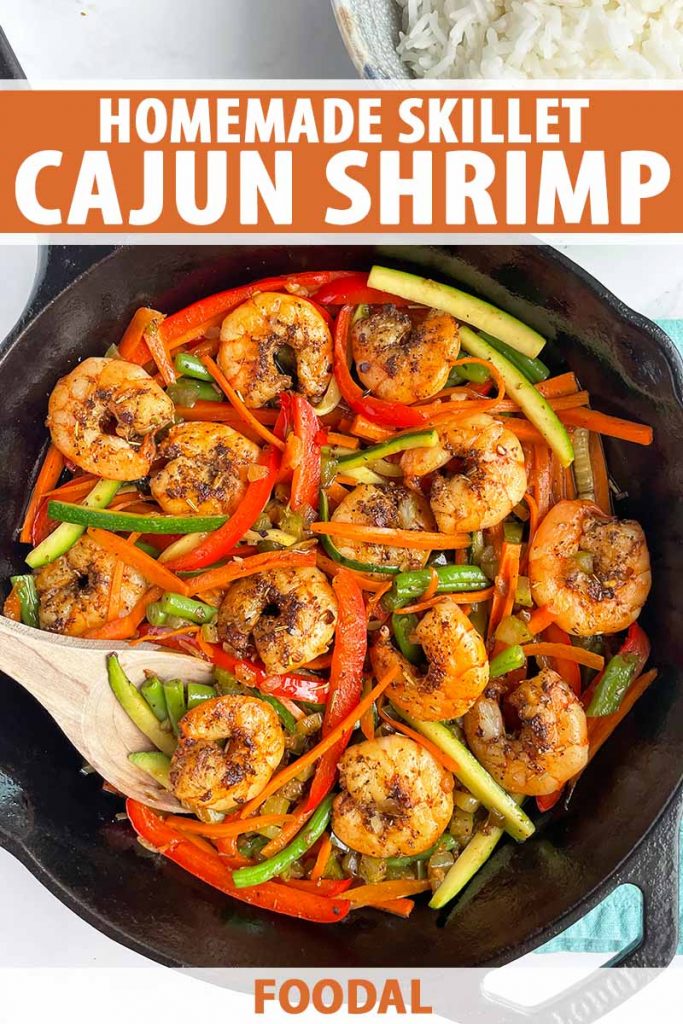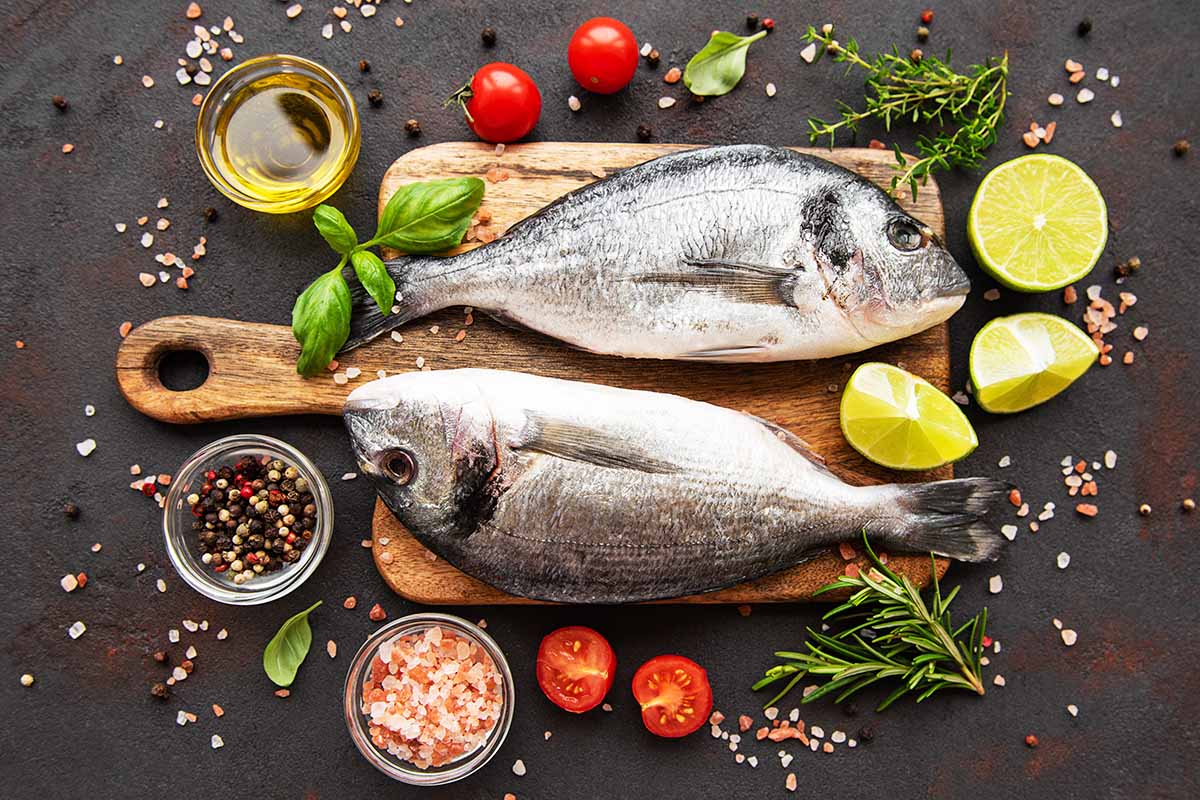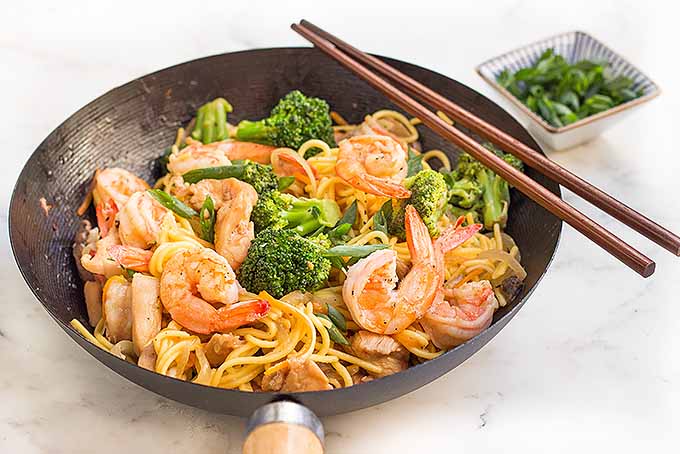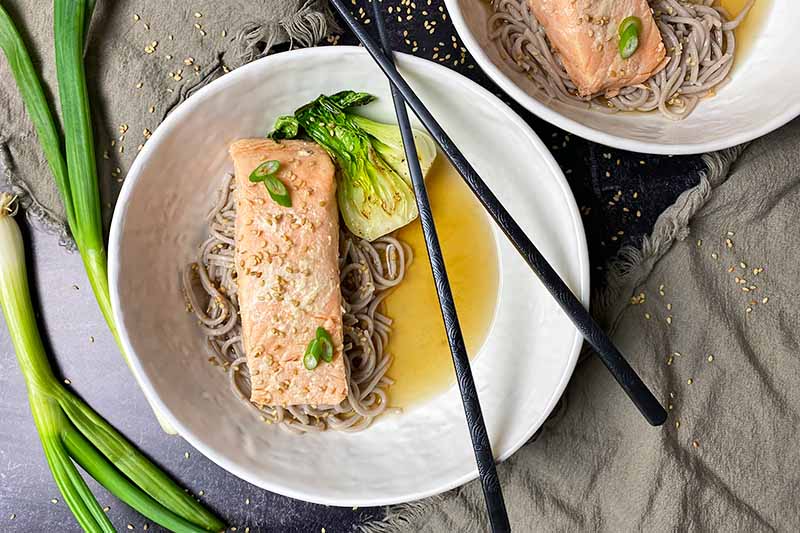If the words “holy trinity” conjure pizza, quesadillas, and burgers in your brain – well, we have a lot in common.
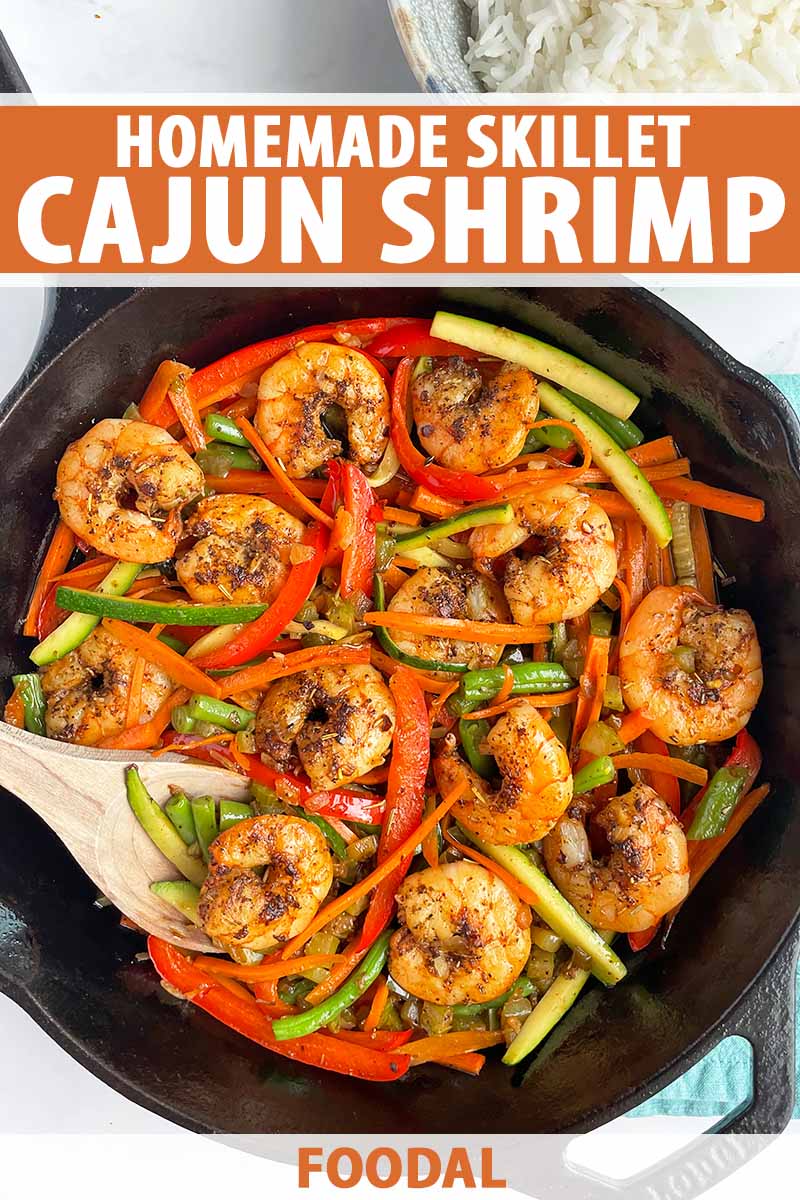
As far as culinary lingo goes, however, the holy trinity is the flavoring base of most rustic Cajun meals. This skillet shrimp and veggie mélange calls upon the sacred starter to form a tasty base for all the flavor that follows.
Various signature blends of sauteed veggies act as the foundation for countless recipes, in fact.
For the French, the classic mirepoix is a trio of carrots, celery, and onion. In Spanish cooking, sofrito is a paste commonly made with a combination of tomatoes, onions, bell peppers, and garlic.
German suppengrün typically combines carrots, leeks or onions, and celeriac or celery. Green onions, ginger, and garlic are a common combo in various types of Asian cuisine.
And of course, you’ll find countless riffs on these throughout the world, with veggies subbed in or out depending on what’s commonly available, and various herbs and other aromatics added or taken away.
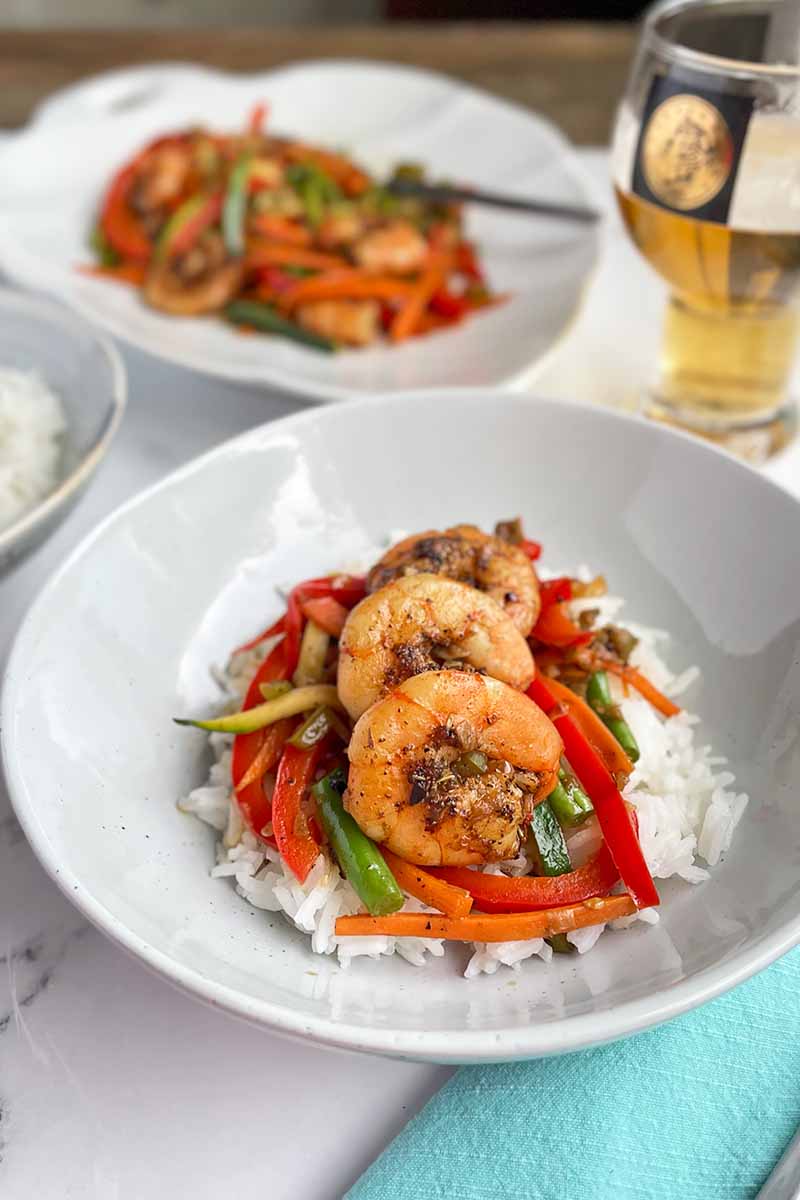
In Louisiana Creole and Cajun cuisine, the holy trinity of diced green bell peppers, onion, and celery is the flavorful framework laid down at the start of a dish. For me, it’s the vegetal grassy flavor of the green bell pepper that stands out the most and lingers the longest.
Taking full advantage of this powerhouse threesome is a genius way to kick off a meal that’s meant to come together quickly. Part of the ease of making this skillet Cajun shrimp is that none of the ingredients spend too long in the pan.
So why not immerse the quick-cooking protein and vegetables in yummy aromatics from the get-go?
If you’re worried about undercooking your shrimp, don’t forget the golden rule of carryover cooking which states that even when meat or seafood is removed from its direct heat source, some additional cooking continues.
Overcooking, on the other hand, is something to be avoided.
With the shrimp only hanging out in the skillet for a short period of time, we want them to pick up and pack in as much flavor as possible while they’re there. In this recipe, the Cajun seasoning blend is responsible for that job, on top of our holy trinity base.

Red pepper flakes and cayenne bring a distinctive fiery flair that screams Cajun influence, while dried herbs like piney rosemary and robust oregano bring floral notes. Garlic and onion powder are traditional in this type of spice blend, but I prefer to incorporate those elements fresh.
Feel free to use whatever veggies you have on hand that will hold up well and become crisp-tender after just a few minutes of sauteing. Carrots, zucchini, and bell peppers are nice and sturdy – and slicing them to about the same thickness helps to ensure they all cross the finish line at the same time.
Next up, where there is spice, there must be beer. I think Thomas Jefferson said that.
And if you’re already planning to sip an ice-cold lager to cool down the heat from the Cajun spices, why not pour a little into the pan as well?
Hey, your food deserves to have a little fun, too.
Crisp, light lagers and citrusy, bready wheat beers are ideal for splashing into a celebratory Cajun dish, but a pilsner also does the trick. Just give it a test sip first. If it’s too hoppy, the bitterness will be overpowering in the finished dish.
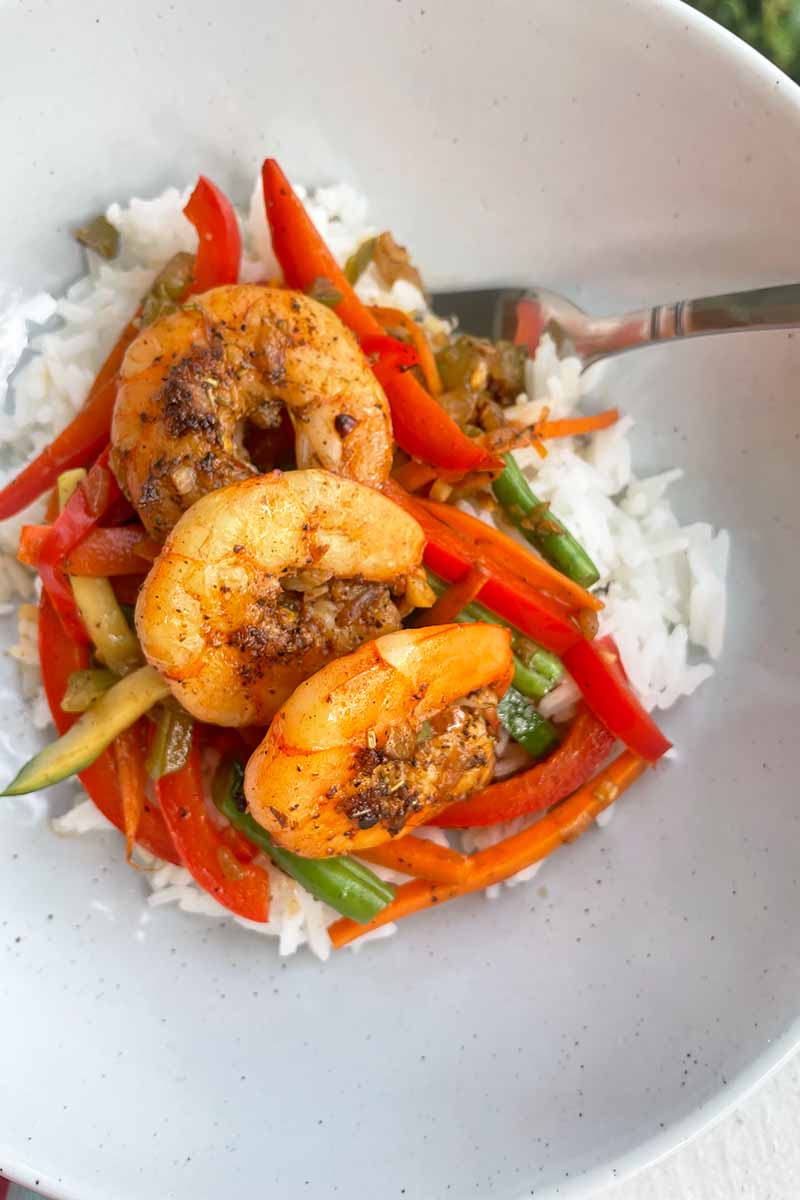
If bubbly brews aren’t your thing, you could sub in a dry white wine to make up for the liquid in the sauce. A little hint of bitterness is all you’re looking for to bring out the rich flavors of the main components in the dish.
If booze isn’t your thing period, this roundup of NA sippers has some stellar zero-proof options for you to try that are perfect for drinking and cooking.
As for the broth, a veggie variety is nice and neutral, but a seafood-based stock will impart a subtle hint of brininess. And a splash of Worcestershire delivers a punch of sweet and sour umami.
That famous holy trinity may have kicked off the flavor party, but I’d say the beer, stock, and Worcestershire really help to bring it all home.
Print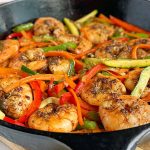
Skillet Cajun Shrimp
- Total Time: 40 minutes
- Yield: 4 servings 1x
Description
Zucchini, peppers, and carrots bring a crunch to this buttery shrimp skillet while the spark of heat is credited to a Cajun spice blend.
Ingredients
- 3/4 teaspoon coarse salt, divided
- 1 teaspoon freshly ground black pepper
- 1/2 teaspoon dried oregano
- 1/2 teaspoon dried rosemary
- 1/2 teaspoon crushed red pepper flakes
- 1/4 teaspoon ground cayenne pepper
- 2 tablespoons olive oil
- 1 pound large raw shrimp, peeled and deveined
- 3 tablespoons unsalted butter, divided
- 1/4 cup diced sweet onion (about 1/2 small)
- 1/4 cup diced celery (about 1/2 stalk)
- 1/4 cup diced green bell pepper (about 1/2 medium)
- 2 large cloves garlic, minced
- 1 cup julienned carrots (about 2 medium)
- 1/2 cup thinly sliced red bell pepper (about 1 medium)
- 1/2 cup thinly sliced zucchini (about 1/2 medium)
- 1/2 cup fresh green beans, sliced into 1-inch pieces (about 3 ounces)
- 1/4 cup beer (such as a light, crisp pale lager or wheat ale)
- 1/2 cup low-sodium vegetable stock
- 1 teaspoon Worcestershire sauce
Instructions
- In a small bowl, combine 1/2 teaspoon of salt with the black pepper, oregano, rosemary, red pepper flakes, and cayenne to make your Cajun seasoning blend.
- Place the shrimp in a large mixing bowl, drizzle with the olive oil, sprinkle with the Cajun seasoning, and toss until well-coated in the spices.
- In a large skillet over medium-high heat, melt 2 tablespoons butter. Add the shrimp to the pan in a single layer and cook for 2 minutes. Flip the shrimp and cook until opaque, about 2 more minutes.
- Remove the shrimp from the pan and set aside on a plate.
- Melt the remaining butter and swirl to coat the pan. Add the onion, celery, and green bell pepper. Cook until the onion is translucent and the vegetables have begun to soften, stirring occasionally, for about 3-5 minutes. Add the garlic and cook for 30 seconds, stirring frequently so it doesn’t burn.
- Add the carrots, red bell pepper, zucchini, and green beans. Saute, tossing the veggies around in the pan as they cook until crisp-tender, about 5 minutes. Season with the remaining salt. Set the cooked vegetables aside with the shrimp.
- Deglaze the pan with the beer, stock, and Worcestershire, scraping up any brown bits from the bottom.
- Bring the liquid to a boil and then reduce the heat to simmer. Cook until the liquid is reduced by about half. Return the shrimp and vegetables to the pan and toss to coat in the sauce, stirring occasionally for about 30 seconds.
- Transfer to a platter and serve with rice.
- Prep Time: 20 minutes
- Cook Time: 20 minutes
- Category: Shrimp
- Method: Stovetop
- Cuisine: Seafood
Keywords: skillet, Cajun, shrimp, seafood, zucchini
Cooking By the Numbers…
Step 1 – Gather, Measure, and Prep Ingredients
Measure the salt, pepper, oregano, rosemary, red pepper flakes, cayenne pepper, olive oil, and butter, as well as the beer (or alternative), vegetable or seafood stock, and Worcestershire sauce.

Dice the onion, celery, and green pepper. For the celery, make several long slices through the stalk lengthwise, keeping one end intact. Run your knife through the stalk crosswise to dice the celery into small, evenly-sized pieces. For the green pepper, slice into strips and then cut crosswise in the same fashion to dice.
Julienne the carrots by peeling them and then slicing into matchsticks. To do this, slice the carrot into thin lengthwise slabs, evenly stack them on top of each other, and then slice lengthwise to create long, thin matchsticks. You could use a julienne peeler for this as well – read our review of the best vegetable peelers for recommendations.
Use the same method to slice the zucchini into matchsticks.
Trim the ends off the green beans and slice them into 1-inch pieces.
Take your shrimp out of the fridge. If they didn’t come peeled and deveined, look to our guide to deveining shrimp to walk you through the process.
If you prefer to use the jumbo size – which make a very elegant presentation – keep in mind that they will take about 5 to 7 minutes total to cook, as opposed to the 4- to 5-minute total cook time for large shrimp.
Step 2 – Make the Cajun Spice Mix and Cook the Shrimp
To make the Cajun spice blend, whisk 1/2 teaspoon of the salt with the black pepper, oregano, rosemary, red pepper flakes, and cayenne.
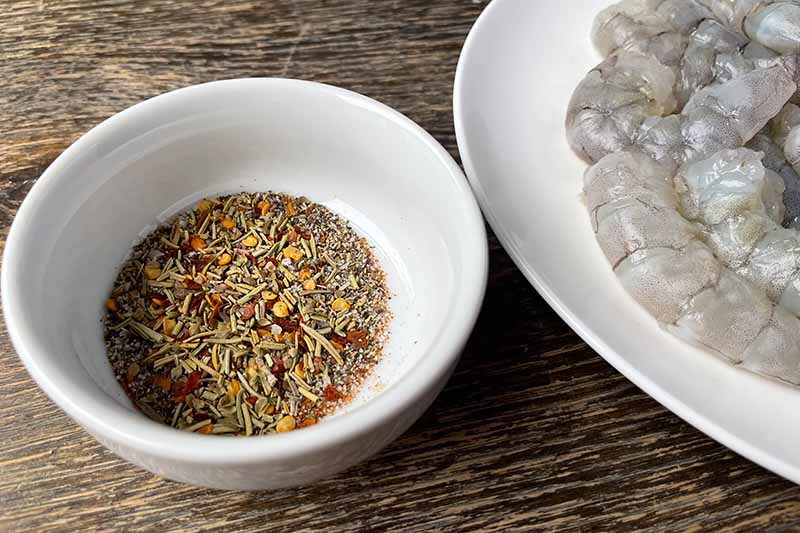
Add the shrimp to a large mixing bowl and drizzle with the olive oil so the spices have something to cling to. Sprinkle them with the Cajun spice mix and toss them until they’re well-coated in the seasoning blend.
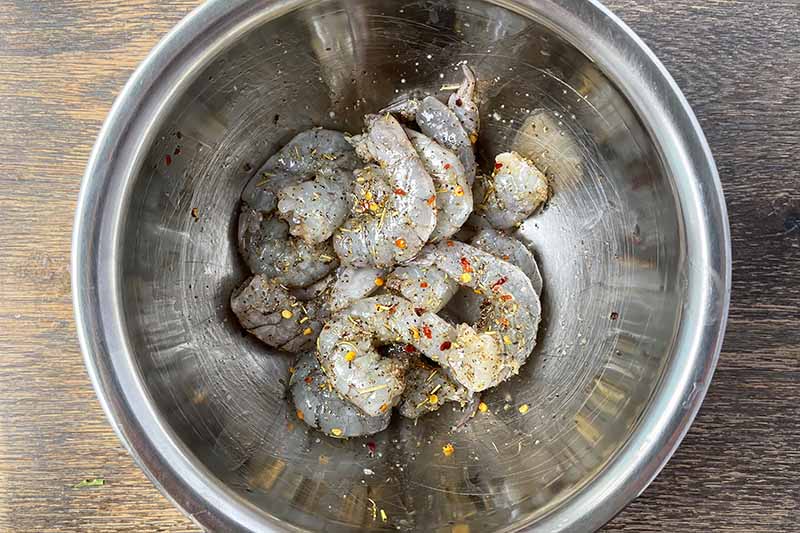
In a large skillet or cast iron pan placed over medium-high heat, melt 2 tablespoons of the butter. Once the butter begins to foam and sizzle, add the shrimp in a single layer. If you don’t have a pan that’s large enough, work in batches to avoid crowding the pan.
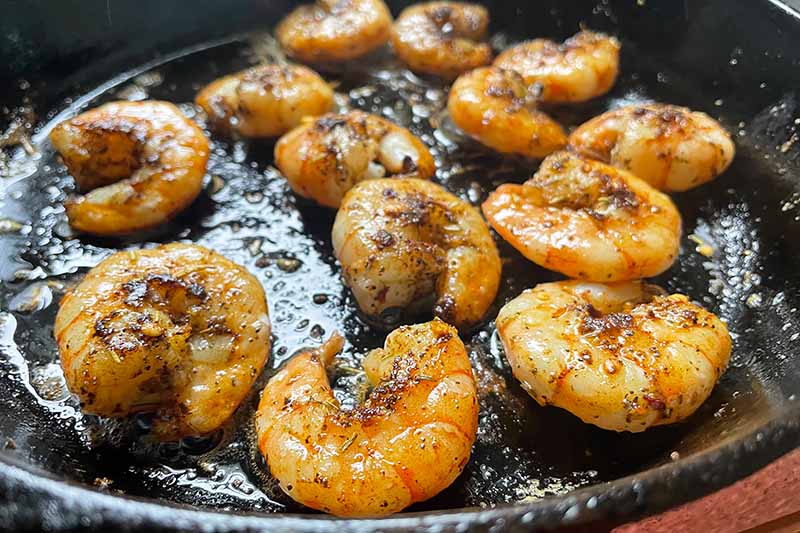
Cook for 2 minutes, flip the shrimp, and cook on the other side until opaque, for about 2 more minutes. The spice blend will form a light crust.
Using a slotted spoon to keep the juices in the pan, transfer them to a plate and set aside.
Step 3 – Saute the Holy Trinity and the Veggies
Melt the remaining butter in the skillet and swirl to coat the pan. Add the onion, celery, and green bell pepper. Stirring occasionally, cook until the veggies begin to soften and the onion is translucent, for about 3 minutes.
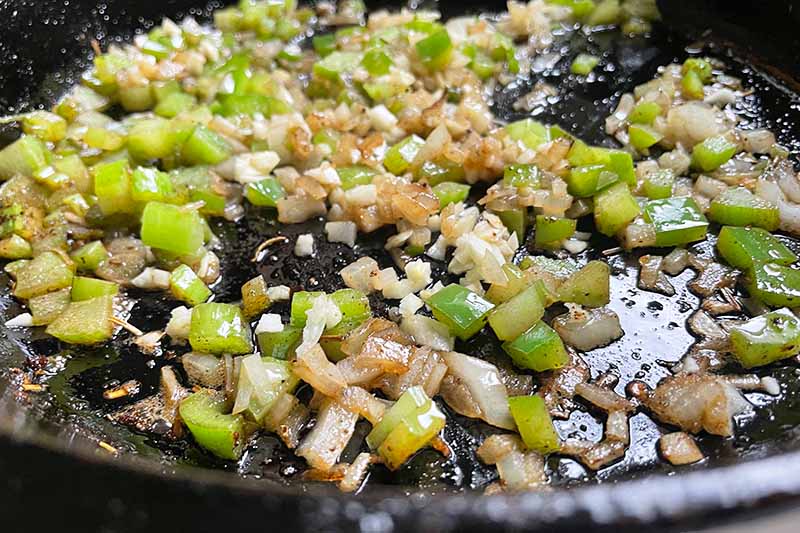
Add the garlic and cook for 30 seconds, stirring frequently to make sure it doesn’t burn.
Add the carrots, red bell pepper, zucchini, and green beans and immediately begin tossing them so they will be coated in the remaining butter and aromatics.
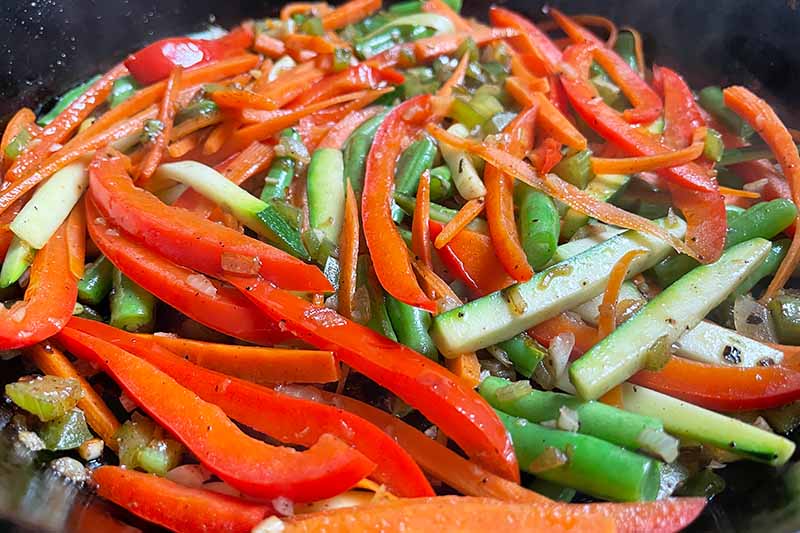
Saute until crisp-tender, continuing to toss the veggies as they cook, for about 3 to 5 minutes. Season with the remaining salt and set the cooked vegetables aside with the shrimp.
Step 4 – Deglaze the Pan and Make the Sauce
Scraping the pan gently as you pour to release any of the spices and browned bits stuck to the bottom, add the beer, stock, and Worcestershire. This will deglaze the pan and add even more intense flavor to your sauce, while preventing anything that’s stuck on from burning as well.
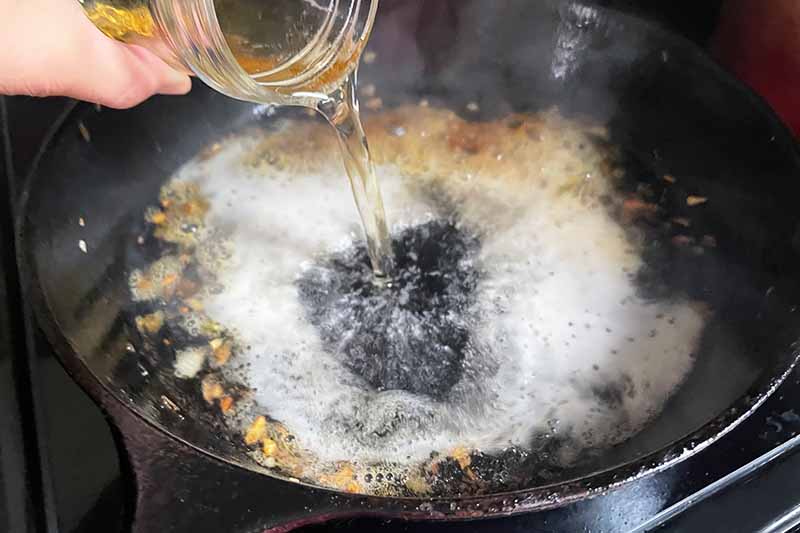
Bring the liquid to a boil and then reduce the heat to a simmer. Whisking and shaking the pan around to keep an eye on the quantity of the liquid, continue cooking until the sauce is reduced by half. This will take about 1 to 2 minutes.
Step 5 – Toss the Shrimp and Veggies with the Sauce and Serve
Return the shrimp and vegetables to the pan, stirring occasionally and tossing to coat them in the sauce. Do this quickly, in about 30 seconds max so you don’t overcook the seafood.

Transfer to a platter and serve with rice.
Rice Is Nice… but Corn Is A-maize-ing?
It’s true that rice is a shoo-in for pairing with saucy shrimp, but if it’s not your jam, don’t be afraid to call on your carby favorites. Whatever they may be.

Creamy parmesan grits, for example, would make a cozy bed for your skillet meal to land on at the end of the day. Shrimp with grits? Sounds like a winning combination I’ve only heard of about nine billion times while living in the south.
To level up the sauce before returning all the main players to the pan, swirling in an extra tablespoon of butter to enrich it first would also be very Southern of you, or very French, depending on who you ask. Party on, y’all.
What will you serve your skillet meal atop to make sure you don’t miss an ounce of sauce? Share your carb of choice in the comments below! And don’t forget to give this recipe a five-star rating if you loved it.
Craving more seafood? Curl up with these tasty shrimp recipes next:
- Low Country Boil with Homemade Seasoning Mix
- Shrimp Enchiladas with Green Chili Queso
- Shrimp with Red Chili Coconut Sauce
Photos by Fanny Slater, © Ask the Experts, LLC. ALL RIGHTS RESERVED. See our TOS for more details. Originally published by Lorna Kring on August 19, 2015. Last updated on July 20, 2022.
Nutritional information derived from a database of known generic and branded foods and ingredients and was not compiled by a registered dietitian or submitted for lab testing. It should be viewed as an approximation.
About Fanny Slater
Fanny Slater is a home-taught food enthusiast based in Wilmington, North Carolina who won the “Rachael Ray Show” Great American Cookbook Competition in 2014, and published her cookbook “Orange, Lavender & Figs” in 2016. Fanny is a food and beverage writer, recipe developer, and social media influencer. She was a co-host on the Food Network series “Kitchen Sink,” was featured on Cooking Channel’s longtime popular series “The Best Thing I Ever Ate,” and continues to appear regularly on the “Rachael Ray Show.”

